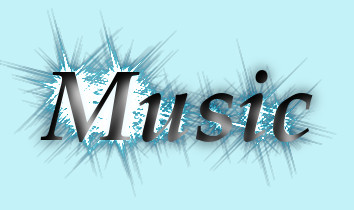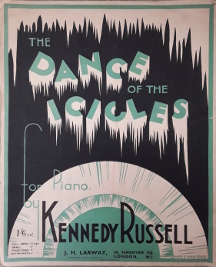

|
Franz Xaver Chwatal (1808 – 1879) was a virtually unknown Bohemian composer. He is best known for instructional pieces. He has a Wiki entry and an IMSLP entry. This particular piece, Eine Heitere Schlittenpartie [A Merry Sleighride or Sleigh Party] is not referred to in either place, but there is an obscure ancient recording of part of it on the Web in an orchestral version. To play my MP3 version, click on the control just below the picture, or right-click [or, in some browsers: click on the menu in the control] to download, or for other options. I also have a MIDI version for anyone who wants to play around with the piece. [Click to hear, if your browser supports MIDI; right click to download. If you don't hear anything (and you haven't muted your player!) see below for what may be needed.] This is clearly a family piece. It is scored for piano duet and toy instruments -- a trumpet, bells and a whip. The duet is not that easy, but well within amateur scope; so I imagine the older children, perhaps teenagers, playing the piano while the small children await their turn on their toys. The score says explicitly what is happening in each phase of the music, but it's easy enough to guess anyway. An initial trumpet call announces the arrival of the sleigh; we set off on the journey to our party, with occasional interruptions from the trumpet, bells and whip; when we arrive, we are greeted by the genial host, who ushers us into the warmth. We are then invited into the ballroom, where a lilting waltz starts up. After that, a Zecher polka; then the waltz returns. But it is soon interrupted by the trumpet, and the return journey. Finally, on arriving back home, we sleepily say goodbye to our fellow party-goers, who depart into the distance. |

|
Many composers have written Christmas music, including hundreds of Christmas carols, and hundreds of 'pop' pieces written to catch the Christmas charts, but also much 'classical' music, not least by composers such as Bach, Mendelssohn, Liszt, Berlioz and Tchaikovsky. We initially intended to use the covers of four such pieces for our never-ending card, but in the end we preferred to use the Chwatal piece described and performed above and tell its story through four different styles of picture, so that you can choose which one you display [if any!]. So we have three pieces left over, described here.
Two of the pieces are by Daniel Godfrey (1831 - 1903). [So he was born pretty much as our house was being built, and there is a local (to us!) connexion in that he died at Beeston, a suburb of Nottingham.] He is an interesting, though nowadays little-known, character, part of an extensive musical family. He was a noted military bandmaster; it's worth reading his story, e.g. on Wiki. Other pieces by him are available on IMSLP, though perhaps surprisingly these two pieces, perhaps his best known, are not listed there. Both pieces are quite fun, though the merry bells are not as merry as they could have been and perhaps go on for too long. As with the Chwatal piece, click on the controls below the cover to play or control the MP3 version, and on the links for the MIDI version.

|
Kennedy Russell (1883 - 1954) was a British composer best
known for his film scores. He has somewhat uninformative
entries on
WIKI,
IMSLP and
IMDB.
The Dance of the Icicles is now his best-known
separate piece; it's taken from a suite, The Wooing of
the Snowflakes. Note: Kennedy Russell's works
are, by default, copyright in the UK until 2024; however,
copyright in this piece was assigned to the publisher, and
is expired. In case it matters ....
|
An MP3 file records the sound of a performance of the music. Almost all computers understand MP3 files, just as they understand JPEG and GIF files for pictures, so the chances are excellent that they will just work, on your computer, tablet or smart phone.
A MIDI file records a performance -- which notes were played, when, how loudly, and so on. To hear the performance, you need either a program [app] such as TiMidity which can act as a synthesiser or a real electronic keyboard which can be connected to your computer/tablet/phone. In the absence of these, you're SOL. Sorry!
There are basically two ways of representing music. The first is to take the actual wave forms of the soundwaves that you hear. In the days of vinyl, this was the shape of the groove that was impressed into the plastic, tracked by the needle as the disc rotated and converted back into the corresponding sounds by the record player. In more modern times, a CD equally encodes that shape, but it does so by sampling the "groove" many thousands of times per second, and recording each sample as a number.
The other is to follow a score. In printed music, this gives instructions to the performers to play such-and-such notes at such-and-such times with such-and-such loudness, and other instruction, such as pedalling. This leaves a certain amount of discretion to the performers; though some composers are more prescriptive than others.
However, neither of these is directly good for computer reproduction. The numbers on a CD are extremely voluminous, amounting to around 10 million bytes per minute; so a gigabyte will hold around 100 minutes of music. Until quite recently, this meant that each CD occupied a significant part of your computer's store, and it would take a long time to download if you were transferring it over the InterWeb thingie. So for practical reasons, it is compressed into so-called MP3 format. Details are beyond the present scope; but we gain typically a factor of ten or so, so we can now store around 15 CDs into a gigabyte. MP3 files are understood by virtually all computers, in the same way that GIF and JPEG formats for pictures are recognised. Your computer will turn them back into music, so that you will hear what you would have heard from a CD of the same music.
Although there is software that deals directly with music scores, this is not the way that most music in MIDI format is produced or processed. Rather, to turn a score into a performance, a performer or sequencer [see later] plays the music into a computer or electronic keyboard which records what notes are played and when, how long the key is held down, and how hard the note is pressed. Playing back that recording will reproduce the performance. If you are a good-enough pianist, that is almost the end of the process. Otherwise, which certainly applies to me, the record needs to be edited, or created in the first place, by a sequencer. This is a program that can be used, like a text editor, to change the details of the performance. I use a now rather old program called Cakewalk, which has lots of useful facilities and can include many aspects of the music not available in other sequencers. When the editing is complete, Cakewalk can convert the music into MP3 and/or MIDI. Whereas MP3 files are almost universally understood, MIDI files are only understood directly by a subset of computers. They are much, much smaller than MP3 files, so even very old and small computers can hold hundreds or even thousands of them. But you need either a soundcard that understands them, or a program that will interpret them, or an electronic keyboard that accepts them as input.
There is still a 'gotcha'. What you hear is not what I hear, but a rendition of the same notes with the same timing and the same loudness. Just as two pianos or violins can sound quite different, so can one same MIDI file played on two different computers, even if the speakers and all other facilities are the same. Your piano may be better or worse than mine, so the performance may equally be better or worse.
But if you want to play around with the music -- make certain bits faster or slower, correct a wrong note, whatever -- then MIDI is the way to go. Another caution; as noted, Cakewalk is richer in facilities than your average sequencer and in particular than MIDI, so there is information in my files that is lost in the MIDI version. In addition, I have a few 'trade secrets' up my sleeve, so you can't expect your copy of my MIDI files to reproduce the MP3 version that you can hear! Sorry.
For information: MP3 is more formally MPEG-1 Audio Layer III, where MPEG is the Moving Picture Experts Group. MIDI is the Musical Instrument Digital Interface, and is a lowest-common denominator standard understood by almost all electronic instrument companies [though many have home-grown extensions], including things like lighting gantries for theatre productions and the like.
Enjoy!
Andy Walker, December 2019
© Copyright 2019, A. N. Walker